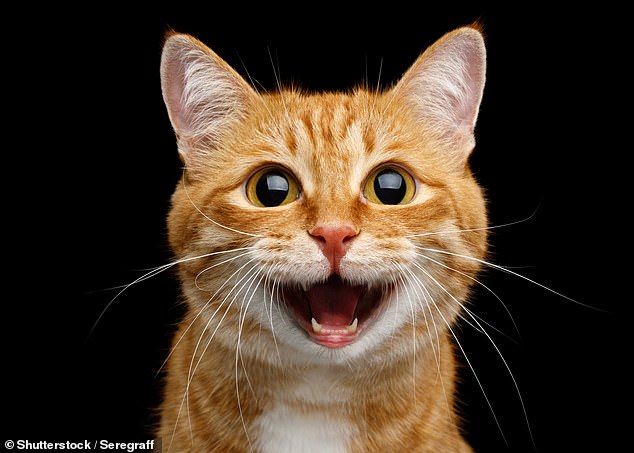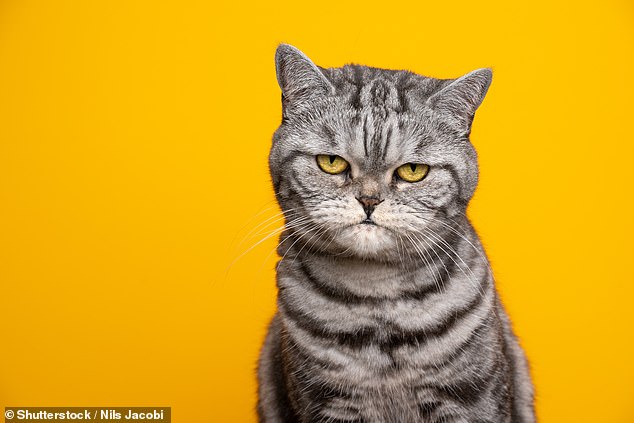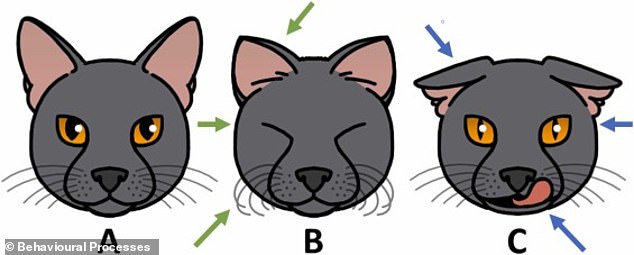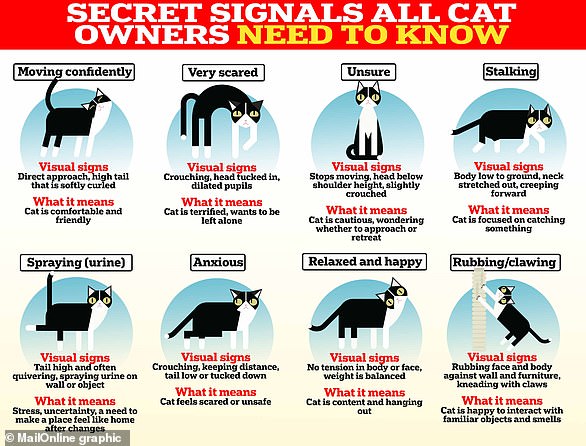Cats have nearly 300 facial expressions, including a ‘play face’ they share with humans, study finds
>
Cats may look mysterious, but they actually have nearly 300 different facial expressions that they show to each other.
Cats are not as aggressive as they sometimes appear, with most of their facial expressions towards other cats being surprisingly friendly.
The researchers observed 53 domestic cats at a cat café over a period of 10 months, and recorded 186 separate encounters between the animals.
They identified 126 friendly facial expressions, including the calm closed-eye expression that cat owners have learned to recognize as a sign of love.
There were 102 unfriendly facial expressions that cats show, such as constricted pupils and flattened ears, that cats also show to humans when they are upset.

Cats may look mysterious, but they actually have nearly 300 different facial expressions that they show to each other

Cats are not as aggressive as they sometimes appear, with most of their facial expressions towards other cats being surprisingly friendly
The study found just 48 facial expressions that, similar to the Cheshire cat, are difficult to read because they can be friendly or unfriendly.
The wide range of facial expressions has surprised experts, as cats, compared to dogs, with their smiles and sad eyes, have relatively static faces.
“These results show that it is a good idea to look at cats’ ears, eyes and whiskers to understand whether they are feeling friendly,” said lead study author Dr Brittany Florkiewicz, from Lyon College in Arkansas.
“Their mouths provide a lot of information about whether a cat fight is likely or not.
“People may think that cat facial expressions are meant to warn other cats and people, but this shows just how social and tolerant pet cats really are.”
The study, published in the Journal of Behavioral Processes, observed 276 types of facial expressions directed by cats toward other cats.
More than half of these expressions indicated a desire to play, including pulling the cat’s lips outward, showing its lower teeth, opening the mouth, and extending the jaw.
This fun was usually friendly.
But the clear signs of uncoordinated cats when their fur is about to fly, the study found, are four muscle movements that appear in different facial expressions.

The study found just 48 facial expressions that, similar to the Cheshire cat, are difficult to read, because they can be either friendly or unfriendly.

Pictured: Illustration of facial expressions most likely to appear in (b) friendly and (c) unfriendly contexts, along with a neutral face (a)
To recognize the clues, simply look for a cat that is licking its lips, its ears have moved to the side of its head, become flattened, and its pupils have narrowed.
The last three of these movements have also been seen in cats who are unhappy with humans in previous studies.
It is believed that cross cats faced with the prospect of a cat fight, or even preparing to hit or scratch a human, instinctively flatten their ears and constrict their pupils to protect their head and eyes from injury.
The four muscle movements seen in friendly facial expressions within the study were eyes closed, ears brought close together, pushed forward, and mustaches also facing forward.
These could indicate a cat preparing to rub against another cat or sniff them curiously.
The researchers were able to identify friendly and unfriendly cat facial expressions based on context, such as whether the cats ended up gently touching or hissing and running away.
The study could help cat owners better understand their cat’s behavior and when they need some alone time.
Cats were found to have 26 unique facial movements that make up their expressions, compared to 27 in dogs and 44 in humans.
(Tags for translation) Daily Mail

